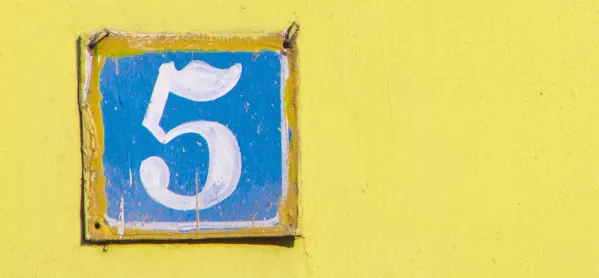I was helping my daughter with her maths homework recently when I was reminded of the importance of being able to make mistakes. It was one of those moments when you can see it is going wrong but you allow (or at least try to remind yourself to allow) the learner to make a mistake.
As teachers, and indeed parents, it can be tempting to step in and fix the equation being worked on or the sentence being written before the learner has had the opportunity to get it wrong and feel uncomfortable.
But the research around the importance of a growth mindset and celebrating mistakes is well documented. So how can you nurture this in your classroom?
Celebrate mistakes
First and foremost, when you, the adult, make a mistake, own up to it. Then model to your learners how that mistake has created a learning opportunity.
If you can’t remember a date, for example, you can tell your class and look it up together, and perhaps even work on a shared mnemonic to help you remember it next time. Explain how the perceived negative can actually be a positive. This reinforces the idea that mistakes are not just inevitable but welcome, and fundamental in the learning process.
Invite error
Set the expectation at the beginning of the lesson: if the work set has been pitched appropriately, the learner will not get it all correct. Ensuring that students are clear at the outset that they will not get everything right helps them to relax and feel more at ease with taking risks.
Get the balance right
How much should a student be getting correct? Rosenshine’s Principles of Instruction state that 80 per cent is the optimal success rate. That sounds great in theory, but in practice it can be difficult to facilitate, particularly for more subjective and creative curriculum areas.
As a leader, I prefer to talk to staff about the balance of success in terms of challenge. We consider the tried-and-tested approach of “what should all, most and some” be able to do. If the balance is right, there will be plenty of opportunities for success, and some opportunities to learn from mistakes.
Tally them up
Developing self-awareness in young people is both important and challenging, particularly around making mistakes. Something that I have seen to be impactful in creating a positive culture around mistakes is encouraging learners to count up how many things they have got correct versus how many mistakes they have made.
Naturally this relies upon the all-important balance of success previously mentioned. But if that is at the right level, tallying up can be incredibly powerful for supporting learning. A simple, age-appropriate table - ticks and crosses or smiley faces and sad faces - at the end of a piece of work leaves the learner with a very positive, visual representation of how successful they have been, and puts mistakes into context.
Back off
There is a sweet spot where learning takes place, but being able to spot it often comes with experience. It is that moment when they have not quite got it and they are uncomfortable as a result. This is the point when we, as the teacher, can be tempted to step in and give the answer or too much assistance.
Recognising that the learner is in this spot, and recognising within yourself that you may be tempted to step in, is critical so you do not scaffold the learning too early and take away the learning opportunity. Going too early will reduce the feeling of exhilaration when the learner gets it by themselves, and if you go too late, well, what’s the worst that will happen? A mistake.
Jason Ford is the deputy head at Hampton Pre‑Prep and Prep School in Middlesex
For the latest research, pedagogy and practical classroom advice delivered directly to your inbox every week, sign up to our Teaching Essentials newsletter




